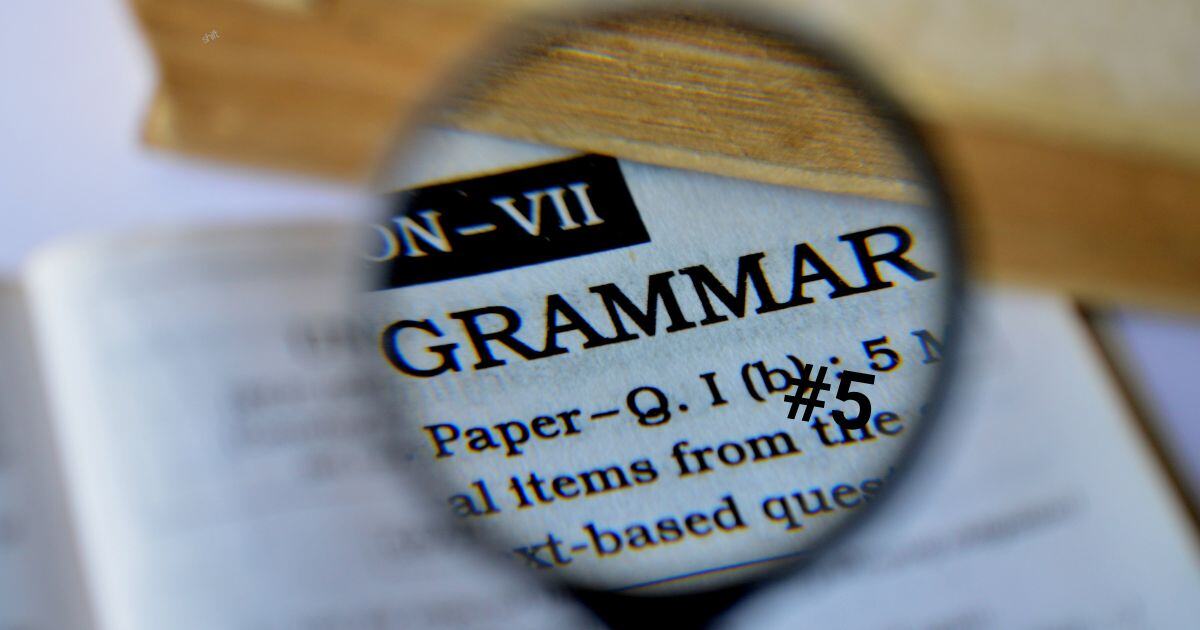E-Commerce | Epic Product Descriptions | Content Quality
Quality Criteria for Product Texts: Standards or Custom Rules?
Reading Time 7 mins | September 25, 2024 | Written by: Adela Schneider

The linguistic quality of product descriptions in e-commerce is an essential factor in ensuring that an online shop presents a professional image. Spelling, grammar and style must be of the highest standard to inspire customer confidence and ensure readability.
But what standards should be adhered to? Are there binding rules for language design, or is there room for individual adjustments?
1. Search engine optimization standards
In e-commerce, SEO is an essential part of every product description, as it increases visibility on Google (and other search engines). There are a number of standards for SEO that apply to onsite optimization. Although they are not always clear and permanently defined, they should be followed to ensure successful findability.
Integration of keywords
The meaningful integration of keywords mainly concerns the interaction between main keywords and secondary keywords. A description with the main keyword sneaker: “Stylish leather sneakers, perfect for everyday wear. Ideal for leisure and sports.” It could be extended to include SEO-relevant secondary keywords such as “men's sneakers” or “comfortable casual shoes”.
The selection of keywords as well as their placement in the body text and SEO elements follows certain rules that allow for a certain variance. However, they cannot be completely ignored if you want to achieve a good ranking.
Structure of SEO text elements
Here, title tags and meta tag descriptions are two of the most important SEO elements that directly influence the ranking of a website in search engines. They each have specific standards that are recommended by most SEO experts to optimize visibility in search results. For example, the length of both elements is specified, and it is also recommended that the main keyword should be placed as close to the beginning as possible in title tags. Again, ignoring rules can be punished with poor rankings.
Conclusion: Adhere to SEO standards and follow SEO experts!
2. Standards for spelling/grammar
There is no doubt that rules must be followed here: spelling and grammar mistakes are unacceptable in product texts; only thoroughly error-free texts convey trustworthiness and professionalism. The problem with spelling is not so much the acceptance of standards as the lack of guidelines in some areas.
Official regulations not available for all languages
There are a number of authorities that regulate the correct spelling of official orthography in different countries. For example, the “Rat für deutsche Rechtschreibung” (German Orthography Council) is a joint council for Germany, Austria and Switzerland. Among other things, it is responsible for defining spelling rules and publishing the official set of rules for German spelling. However, this is not the Duden, the best-known reference work for spelling and grammar in the German language, which represents one interpretation of the official rules.
| Please note: The official rules apply to authorities and schools – there are no regulations for texts in other areas of use. |
While there are official committees that set the spelling rules for the Spanish (“Real Academia Española” RAE, valid for almost the entire Spanish-speaking world) and Russian languages, these are lacking in the USA and Great Britain.
Standard dictionaries: Good guidelines
In all languages, there are well-known dictionaries that are referred to for spelling and grammar questions, such as the Duden, the Petit Robert, Merriam-Webster or the Oxford Dictionary of English. They represent agreements or recommendations, but are not binding in themselves.
Nevertheless, they are a good starting point for a standard, at least for the non-ambiguous cases. If official rules exist, they are listed here along with the common and widespread spellings.
Consistency is more important than conformity with the rules
However, since language is constantly changing or has to meet different requirements, there are many cases where these dictionaries present various spellings or only express recommendations. In such cases, it is necessary to consider how to implement the recommendations and to record them in a style guide. Consistency and correctness are important indicators of the level of care and professionalism.
In some cases, it may even make sense not to follow the standard definitions in the dictionary if there are other requirements that are more important.
|
Example: rules for hyphenation However, in practice, hyphens can significantly improve readability by breaking up the structure of a long word.
Using hyphens here makes the long term easier to read and understand. |
It is crucial that the texts are error-free in the sense that they do not contain unintentional errors, such as forgotten or transposed letters, or break any rules clearly stated in the standard works. In addition, there is a not-so-small range in which one cannot rely on the standard works alone, either because they do not contain a rule for certain cases, or because a breach of the rules for the product text can be advantageous.
For this leeway, it is essential to establish customized binding rules in order to ensure consistency.
Conclusion on spelling: check unambiguous standards and fill in the gaps with your own customizations.
3. Standards für Stil/ Lesbarkeit
Verbindliche Regeln für Lesbarkeit und Stil – gibt es sie?
Im Bereich der Lesbarkeit und des Stils gibt es keine universellen, verbindlichen Regeln, die strikt befolgt werden müssen. Lesbarkeit und Stil sind stark kontextabhängig. Stilvorgaben können von Unternehmen, Redaktionen oder Plattformen festgelegt werden, oft im Rahmen von Styleguides, die die gewünschte Tonalität und Ausdrucksweise definieren. Diese Vorgaben dienen der Einheitlichkeit und der Wiedererkennung der Marke.
Versuche der Standardisierung
Trotz der fehlenden Verbindlichkeit gibt es etablierte Empfehlungen und Standards, die oft zur Orientierung genutzt werden. Die Lesbarkeitsformel von Flesch (Flesch-Reading-Ease) ist beispielsweise ein verbreitetes Werkzeug zur Messung der Lesbarkeit von Texten, insbesondere im englischsprachigen Raum. Auch für andere Sprachen gibt es ähnliche Metriken, die auf Faktoren wie Satzlänge, Wortlänge und Komplexität der Grammatik basieren (wie z.B. die Amstad- oder die Lix-Formel oder für mehrere europäische Sprachen).
Ebenfalls häufig genannt werden Empfehlungen, kurze und klare Sätze zu verwenden, auf Fachjargon zu verzichten und eine aktive Sprache gegenüber der passiven zu bevorzugen.
3. Standards for style/readability
Are there mandatory rules for readability and style?
In the area of readability and style, there are no universal rules that must be strictly followed. Readability and style are highly context-dependent. Style guidelines may be in place at the corporate, editorial, or platform level, often in the form of style guides that define the desired tonality and style of expression. These guidelines are used to ensure brand consistency and recognition.
Attempts at standardization
Although not binding, there are established recommendations and standards that are often used as a guide. For example, the Flesch Reading Ease formula is a common tool for measuring the readability of texts, especially in English-speaking countries. Similar metrics are available for other languages, based on factors such as sentence length, word length, and grammatical complexity (such as the Amstad or Lix formula, or for several European languages).
Recommendations to use short, clear sentences, to avoid jargon, and to favor active language over passive language are also frequently mentioned.
AI-based correction software: the solution for quality standards?Today's software such as Grammarly, Duden-Mentor or LanguageTool are good tools for quickly and efficiently correcting spelling and grammar mistakes. These tools recognize errors such as incorrect comma placement, spelling mistakes or sentence structure problems and often also offer stylistic suggestions for improvement. Above all, they provide support in implementing the quality standards – the decision as to which standards apply and which do not remains with the content writer. What are the limitations of this type of software?
|
Challenges in standardizing readability and style
Standardization in the area of readability and style also presents challenges, however. What is considered “easy to read” varies depending on the target group, industry, and medium. A scientific text has different stylistic requirements than a product text, and what is considered appealing to one target group may seem inappropriate or difficult to understand to another. Standardization reaches its limits here because it is not flexible enough to be suitable for all contexts.
Media style guides
To meet the challenges of standardizing readability and style, many large media companies and brands have developed what are known as style guides that provide clear guidelines for how texts should be written and presented. Well-known examples include the AP Stylebook, the Chicago Manual of Style and the Guardian Style Guide. These guidelines define how certain linguistic and stylistic elements should be handled, for example, how to address the reader or how to deal with foreign words. Such style guides from media companies – originally designed for internal editorial use – are primarily established as reference works in the English-speaking world. In many other languages, such style guides have not been able to establish themselves as a recognized standard.
Conclusion style and readability – formulate your own guidelines for language and style!
Documenting standards: style guides and editorial manuals
If a content team decides to develop its own guidelines and rules, these must also be documented. In e-commerce, style guides or editorial manuals are used to record the individual decisions for the team's content standards: these range from precise SEO instructions to tonality and language style to spelling standards. They govern vocabulary and preferred wording, as well as grammar and spelling conventions, list abbreviations, define the use of numbers, and make suggestions for sentence structure, such as the recommendation to use short and concise sentences to promote readability.
They are an important quality assurance tool and help to make product descriptions clear and consistent. They ensure that the texts reflect the brand value and are appealing to the target group. Only if content teams catalog a variety of aspects in such documents can they ensure consistent communication.
Adela Schneider
Adela's main focus at AX Semantics is the conception of e-learning and the development of the didactic framework of teaching materials. For years, she has been intensively researching what constitutes a great text and how it is created, especially in the professional field. She is also fascinated by the possibilities and limits of generative AI and is thinking about the future development of writing in the context of new writing technologies.
